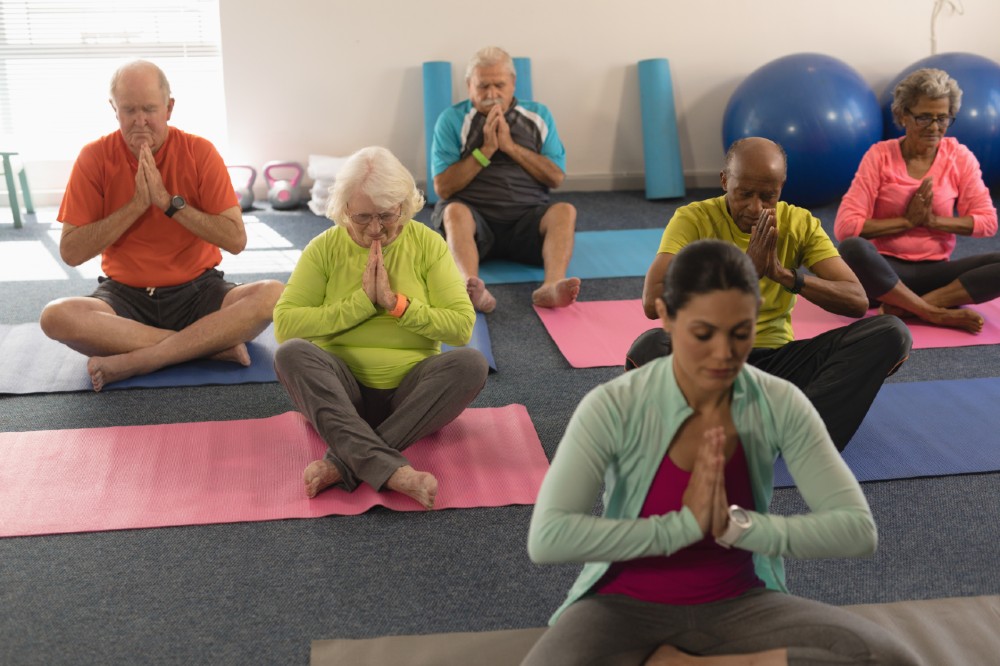Perspectives from Older Adults on the Positive Effects of Mindfulness and Exercise
Any transition or change can be stressful. As we age, our minds and bodies undergo changes that require new ways of navigating certain situations. We might realize we need to change our health behaviors, such as adopting healthier eating or increasing our daily physical activity; however, competing priorities make this difficult and add stress to our lives. This is compounded by stress from day-to-day changes and unexpected life events, which can negatively affect our mental and physical health.
Mindfulness and exercise have gained attention in recent years as ways to positively improve our lives both physically and mentally. The literature has shown that exercise can prevent falls and improve mood, while mindfulness interventions can reduce stress and worry, as well as improve mental health and awareness. Both have been shown to improve cognitive functioning. While the research on such topics has experienced an upsurge in recent years, less is known on how such practices can be used to bolster the life of older adults who may face significant life changes including retirement, declining health, and subsequent relocation or admission to a nursing home.
A recent study explored the perspectives from a group of older adults on the benefits of mindfulness and exercise. Individuals were aged 65-84 years and had participated in a Mindfulness-Based Stress Reduction, Health Education and Exercise (MEDEX) study. The study randomized participants to four groups: exercise only, Mindfulness Based Stress Reduction (MBSR) therapy only, exercise and MBSR, or a health education control condition. Interventions lasted 18 months. Individuals in the exercise group received structured instruction on aerobic training, resistance and balance/mobility exercises, and strength training 2 times a week for the first 6 months and 1 time a week for the remaining 12 months. Individuals were encouraged to complete 150 minutes per week of exercise at home. The MBSR group met for eight 2.5-hour practices and one four-hour silent retreat, led by instructors experienced in MBSR. Mindfulness practices included mindful breathing, eating, and listening, as well as sitting, walking, and lying down meditations, and yoga. Participants in this group were encouraged to complete mindfulness activities at home for up to 45 minutes per day. The combination group followed both exercise and MBSR schedules.
Individuals in the exercise only group reported that exercise was beneficial to increasing their mobility and strength. They appreciated learning how to improve their form from instructors in order to do an activity correctly, and also appreciated how the exercises helped them learn more about their bodies. Similarly, individuals in the MBSR only group reported that mindfulness improved their overall mental and emotional state of mind, such as being less judgmental towards themselves and feeling more relaxed and calmer. They also reported improved sleep and decreased tension as additional benefits.
In the combined exercise and MBSR group, individuals also reported positive changes as a result of exercise and mindfulness. They reported feeling more flexible, having better balance, and feeling more confident walking without falling. Additionally, some participants reported feeling more energetic and experiencing less back pain. Participants also shared that they felt less stress and more patience. Their confidence had improved and as a result, they felt they were able to “let the small things go.” Socially, participants reported that attending exercise classes and mindfulness groups was important to making new friends and improving their connection to others.
Interestingly, and not surprisingly, the study found that time was a huge barrier to the participants. Participants reported leading busy lives despite being retired, which made it difficult to schedule or fit in mindfulness and exercise. Competing priorities sometimes made it difficult to achieve consistency in their programs. This aligns with other research that shows that time is a longstanding obstacle to implementing new behaviors and new routines, especially those related to health. However, participants reported that having other people in their groups increased their accountability to follow through with exercises and practices. A common theme was the importance of having a facilitator help with maintaining exercise and meditation routines – in this case, the trainers and instructors.
Individuals reported that the staff influenced their level of motivation: positive reinforcement from staff motivated individuals to complete their exercises.
While the study did not focus on nursing homes, it could have implications for those settings. Transitioning to a nursing home can be a stressful experience requiring significant adjustment to a new setting, new people, new living situation, a new schedule, as well as having to deal with the new health status that placed them there. The stress from these experiences and events can negatively affect quality of life. Could implementing a mindfulness and exercise program in nursing homes help combat the stressors of the aging process and living in an unfamiliar environment? Could it improve quality of life? More research in these areas can increase awareness of the benefits of implementing such programs to provide older adults with additional skills they need to cope with change and its challenges.

